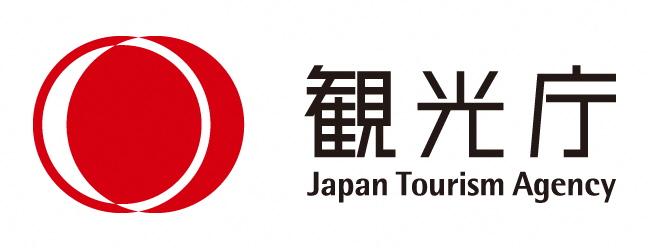NO 002
Shodendo Main Hall
歓喜院聖天堂
(251-500 words, web)
The Shodendo is the main building and the spiritual heart of Menuma Shodenzan Temple. The exterior of the hall is adorned with colorful carvings which depict Buddhist teachings and allegories, aspects of classical Chinese culture, and auspicious animals. These were designed to appeal to lay people. The main hall enshrines Shoden (or Kangiten), the deity of joy, conjugal harmony, and longevity, who is the Buddhist representation of the Hindu god Ganesha. The Shodendo is designated a National Treasure.
Lavish carvings
The main hall is three halls connected under a single roof: a hall of worship (haiden) at the front, an inner sanctuary (okuden) at the back, and an intermediate hall (chuden) in between. This style of architecture characterized by ornate carvings is known as gongen-zukuri. The style takes its name from Tosho Daigongen, the posthumous name of Tokugawa Ieyasu (1542–1616). He was the founder of the Tokugawa shogunate, which re-united Japan after centuries of civil war, and ruled Japan from 1603 until 1867. His ornate mausoleum at Nikko Toshogu Shrine in Tochigi Prefecture, built in 1635, is one of the most famous examples of gongen-zukuri architecture. The Shodendo is often compared with Nikko Toshogu Shrine for its lavish carvings and architectural style.
A wealth of color and detail
The roof gables are inset with colorful carvings, and the eaves and lintels are decorated with lions, tigers, and mythical creatures such as dragons. A carved frieze shows figures practicing the four classical accomplishments of ancient Chinese scholars: painting, calligraphy, playing the zither, and the strategy game of go. A similar carving can be found on the Yomeimon Gate at Nikko Toshogu Shrine.
The exterior walls of the inner sanctuary at the back of the main hall are likewise covered in detailed carvings. Layers of vibrant color and gilding enhance the striking appearance of the Shodendo and its carvings.
A legacy of craftsmanship
The construction and decoration of the main hall started at the back. As work progressed to the front, the decoration became simpler, likely because of lack of funds. For a small fee, visitors can walk around the back of the main hall to view the carvings more closely.
The Shodendo has been rebuilt several times since Menuma Shodenzan Temple was established in the twelfth century. The current main hall was completed between 1735 and 1760 and was funded entirely by donations from the local community. The cost was around ¥2 billion in today’s money. Master carpenter Hayashi Masakiyo (1678–1753) designed and oversaw the reconstruction with his son Masanobu (1736–1802), who completed the project after his father passed away. They came from a family of master carpenters who worked on prominent shrines and mausoleums during the Edo period (1603–1867), including the restoration of Nikko Toshogu Shrine. The main hall and its carvings were restored from 2003 to 2010.
Shodendo Main Hall
歓喜院聖天堂
(251-500 words, web)
聖天堂は、歓喜院の本殿で妻沼聖天山歓喜院精神の中心です。本殿の外壁には、色鮮やかな彫刻が施されており、仏教の教えや寓話、伝統的な中国文化の側面や縁起の良い動物が描かれています。これらの絵は、一般人の啓蒙を目的としたものです。本殿には、夫婦和合・子授け・福徳の神で、ヒンドゥー教の神ガネーシャの仏教版である聖天(歓喜天)が安置されています。聖天堂は、国宝に指定されています。
豪華な彫刻
本殿は、前方にある拝殿と後方にある奥殿に加え、その間にある中殿の3殿が1つの屋根で繋がっています。この華麗な彫刻が特徴の建築様式は権現造りとして知られています。権現造りは、徳川家康(1542~1616年)に贈られた東照大権現という戒名がその名の由来です。徳川家康は、何百年も続いた内乱の後に日本を再度統一し、1603年から1867年まで日本を統治した徳川将軍家の始祖です。1635年に建設された栃木県の日光東照宮にある徳川家康の霊廟が、権現造りでもっとも有名なものの1つです。聖天堂は、その豪華な彫刻と建築様式でよく日光東照宮と比較されます。
ぜいたくな色彩と細部
切妻屋根には色鮮やかな彫刻がはめ込まれ、軒やまぐさには獅子、虎、竜などの伝説上の生き物の装飾が施されています。彫刻が施されたフリーズには、中国古来の文人がこなした四芸(絵、書、琴、囲碁)が描かれています。日光東照宮の陽明門にも、同様の彫刻を見つけることができます。
本殿後方にある奥殿の外壁にも、細かな彫刻が施されています。鮮やかな色彩と金箔の層が、聖天堂とその彫刻の印象的な外観をさらによくします。
職人技の遺産
本殿の建設と装飾は後方から始められました。作業が進むにつれ、資金が底をついていったせいか、装飾は次第に地味になっていきます。少額の拝観料を払えば、本殿の奥まで行ってこの彫刻をより間近で目にすることができます。
聖天堂は、妻沼聖天山歓喜院が12世紀に建てられて以来、数回にわたって再建されています。現在の本殿は1735年から1760年の間に完成されたもので、その資金は地元の人々からの寄付金だけで賄われました。その金額は、今日の価値でおよそ20億円でした。名工林正清(1678~1753年)が息子の正信(1736~1802年)と共にその設計と監督を行い、正清他界後は息子・正信がこれを完成させました。林家は代々名工で、日光東照宮の改修を含め、江戸時代(1603~1867年)にあらゆる有名な神社仏閣や霊廟を手がけています。本殿とその彫刻は、2003年から2010年に修復作業が行われています。

- ※この英語解説文は観光庁の地域観光資源の多言語解説整備支援事業で作成しました。






